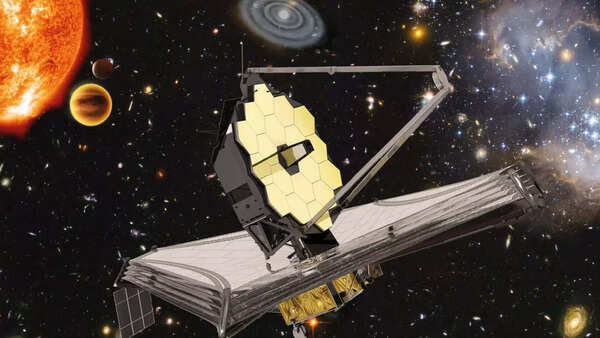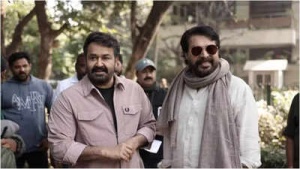Are we living inside a black hole? NASA’s James Webb findings stun scientists
A recent discovery by NASA's James Webb Space Telescope has sparked renewed interest in a mind-bending theory: the possibility that our entire universe resides within a colossal black hole.
After meticulously examining hundreds of ancient galaxies, scientists have observed a perplexing phenomenon. A significant portion of these galaxies appear to rotate in the same direction, a finding that contradicts established models of the universe's early formation. This anomaly is prompting scientists to re-evaluate the fundamental structure and origins of the cosmos, potentially revolutionizing our comprehension of space, time, and reality. While further research is crucial, the notion that our universe could exist within a black hole is gaining traction beyond the realm of science fiction.

Galaxy Spin Pattern Challenges Chaos Theory
Using its highly sensitive instruments, the James Webb Space Telescope analyzed 263 ancient galaxies, some dating back to a mere 300 million years after the Big Bang. These galaxies represent some of the oldest and most distant objects ever observed.
Remarkably, approximately 60% of these galaxies exhibit rotation in the same direction, predominantly clockwise. This observation challenges the widely accepted belief that galaxy spin directions should be random, particularly across such expansive regions of space.
In the standard cosmological model, galaxies are believed to have formed from the chaotic distribution of matter following the Big Bang. Consequently, their spin directions, either clockwise or counter-clockwise, should also be random.
However, the James Webb findings suggest otherwise. The coordinated rotation of a large number of galaxies implies the existence of an underlying order or force that influenced their formation in the early universe. This unexpected uniformity has led scientists to reconsider radical concepts, including the possibility that we inhabit a black hole.
What Does It Mean to Live Inside a Black Hole?
While the concept may seem like science fiction, it is rooted in established physics. A black hole is a region of spacetime where gravity is so intense that nothing, including light, can escape. At its center lies a singularity, surrounded by a boundary known as the event horizon.
Some physicists propose that the collapse of a massive star under specific conditions could create a black hole that gives rise to an entirely new, enclosed space – potentially a whole universe. According to this theory, our own universe could exist within the event horizon of a much larger black hole residing in another "parent" universe.
Why Are Scientists Taking This Seriously Now?
The synchronized spinning of galaxies observed by the James Webb Space Telescope suggests the existence of large-scale patterns or forces that are difficult to explain using current models. If the early universe was influenced by the properties of a black hole, such as its rotation or shape, it could account for the consistent spin direction of numerous galaxies today.
The concept of a universe within a black hole also offers potential solutions to other cosmological puzzles, such as the observed uniformity of the universe and the peculiar behavior of spacetime.
Limitations of the Theory
It is important to note that not all experts are convinced. Some suggest that the observed phenomenon could be attributed to observational bias. In other words, our interpretation of distant light may be distorted by effects such as the Doppler shift or the limitations of our telescopes.
The researchers themselves acknowledge the need for more data and thorough analysis before drawing definitive conclusions. However, even if the "black hole universe" hypothesis proves to be incorrect, this discovery opens exciting new avenues for exploring the nature of space.
What's Next?
Scientists will continue to observe more galaxies across different regions of the sky to verify the consistency of the observed pattern. If similar spin alignments are found elsewhere, it could indicate the presence of a universal force or condition that prevailed in the earliest moments after the Big Bang.
Theoretical physicists are revisiting their models in an attempt to incorporate this new information into the cosmic puzzle.
These discoveries may seem abstract and detached from everyday life, but they address fundamental questions about the nature of the universe and our place within it. By exploring ideas like a "black hole universe," we are not only studying space but also gaining insights into our cosmic origins and the potential for what lies beyond.
Older articles
-
 Will Nysa Devgan enter Bollywood like Raveena Tandon's daughter Rasha Thadani? Kajol reveals the truth
Will Nysa Devgan enter Bollywood like Raveena Tandon's daughter Rasha Thadani? Kajol reveals the truth
-
 Selena Gomez and Hailey Bieber UNFOLLOW each other amid Justin Bieber drama
Selena Gomez and Hailey Bieber UNFOLLOW each other amid Justin Bieber drama
-
 'Prince and Family' OTT release: When and where to watch Dileep's comedy drama
'Prince and Family' OTT release: When and where to watch Dileep's comedy drama
-
 Suchitra Krishnamoorthi faces backlash for claiming Air India crash survivor was ‘LYING’; Deletes post and issues apology
Suchitra Krishnamoorthi faces backlash for claiming Air India crash survivor was ‘LYING’; Deletes post and issues apology
-
 Is Mohanlal, Mammootty, Mahesh Narayanan’s project titled ‘Patriot’? - Here’s what we know
Is Mohanlal, Mammootty, Mahesh Narayanan’s project titled ‘Patriot’? - Here’s what we know
-
 Mahbub Anam replaces Faruque Ahmed as new BPL chairman
Mahbub Anam replaces Faruque Ahmed as new BPL chairman
-
 Still swooning over Ahn Hyo Seop and Kim Sejeong in ‘Business Proposal’? Here are 3 new K-Dramas to obsess over next!
Still swooning over Ahn Hyo Seop and Kim Sejeong in ‘Business Proposal’? Here are 3 new K-Dramas to obsess over next!
-
 Jaya Bachchan believes Amitabh Bachchan “gave a better performance” than her in ‘Mili’ - Exclusive
Jaya Bachchan believes Amitabh Bachchan “gave a better performance” than her in ‘Mili’ - Exclusive
-
 Are we living inside a black hole? NASA’s James Webb findings stun scientists
Are we living inside a black hole? NASA’s James Webb findings stun scientists
-
 Here's how Vivek Oberoi built a ₹1,200 crore empire after being told by his father to be independent: 'I'm rich, you're not'
Here's how Vivek Oberoi built a ₹1,200 crore empire after being told by his father to be independent: 'I'm rich, you're not'